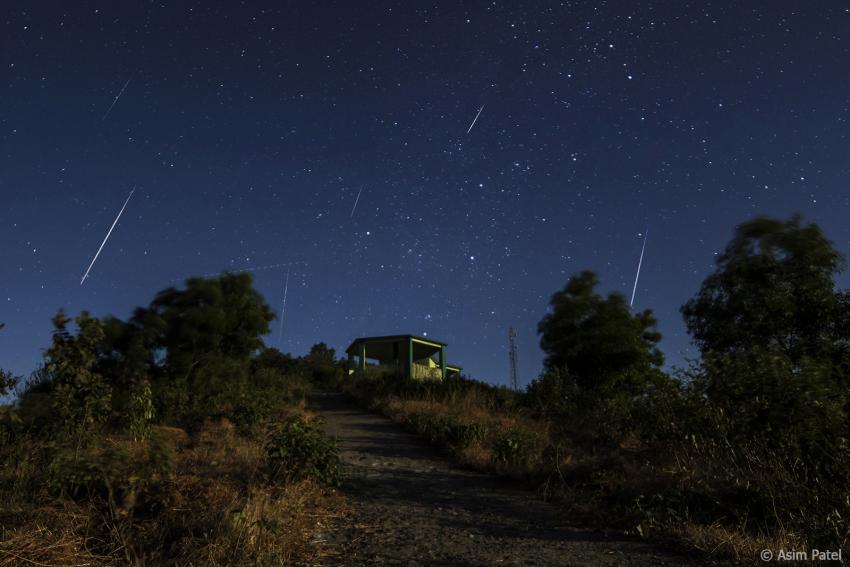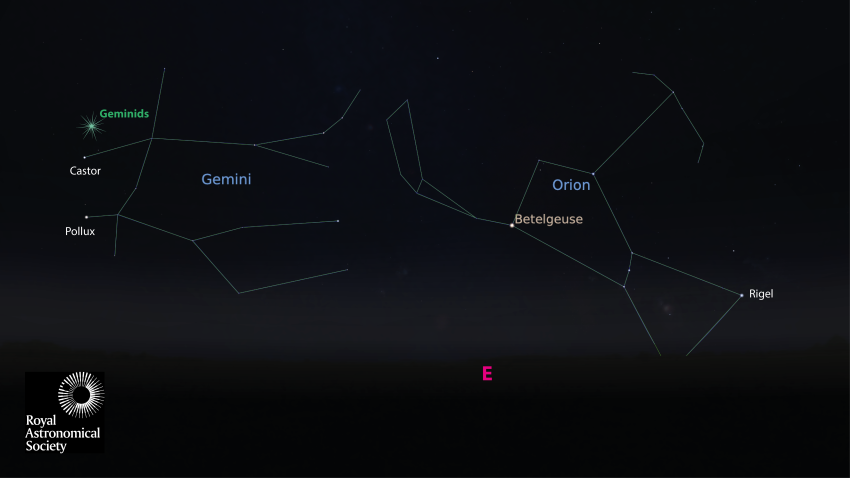Stargazers will have a chance to enjoy one of the most spectacular meteor showers of the year later this week, as the Geminids reach their peak.
Under perfect conditions, up to 150 meteors an hour could light up the night sky from Thursday into Friday (December 14-15), although the majority of observers can expect to see closer to 40 or 50 an hour as long as skies are clear.
Most meteor showers are caused by comets but the Geminids are unusual because they originate from the debris of an asteroid known as 3200 Phaethon.
They also have a greenish hue when they burn up in the Earth’s atmosphere, rather than being colourless or white like other meteors. This is because of their chemical composition – oxygen, magnesium and nickel usually produce a green colour.
The good news for skywatchers is that the arrival of a new moon that is just 1% illuminated should make for ideal viewing conditions, because there will be less light pollution to weaken what should be a dazzling show.
Dr Robert Massey, Deputy Executive Director at the Royal Astronomical Society, said: "The Geminids are a night sky treat and one of the best meteor showers of the year.
“What makes them particularly pretty is their colour, so it's worth braving the colder weather to see what should be an impressive display.
“You don’t need any equipment, just try to find a dark spot away from city lights and look up!”
The Geminids will be visible with the naked eye all over the UK and will peak at about 19:00 GMT.
Meteors can appear in any part of the sky but observers should look to the northeast to get the best view. If cloud cover makes spotting them tricky, the shower will still be active until December 20 – albeit at a reduced rate.
The Geminids were first observed in 1862 and are thought to be intensifying every year. They are considered to be one of the best and most reliable annual meteor showers.
Meteors are small pieces of interplanetary debris which burn up in the Earth’s atmosphere after coming in at high speeds – typically at 130,000 kilometres an hour in the case of the Geminids.
Friction with the upper atmosphere quickly heats up the incoming debris, the air around them glows brightly, and the particles are rapidly destroyed. The resulting streak of light is what we see from the ground as a meteor, or ‘shooting star’.
Outside of meteor showers, there are around six random meteors (sporadics) visible each hour from a given location on any night.
But throughout the year the Earth’s orbit intersects material left behind by comets, or in the case of the Geminids, the asteroid Phaethon. When we encounter these thicker streams of debris there is a surge in meteor numbers, which is what creates the shower.
Meteors in the upcoming shower can appear anywhere in the sky, but their trails appear to originate from a single point (known as the radiant) in the constellation of Gemini, hence the name Geminids. These meteors appear to be fairly slow moving, and can be intensely coloured.
If you manage to get any pictures or videos of the Geminid meteor shower then we'd love to see them. You can find us on X, Facebook, Instagram, LinkedIn and YouTube.
Media contacts
Dr Robert Massey
Royal Astronomical Society
Mob: +44 (0)7802 877 699
press@ras.ac.uk
Sam Tonkin
Royal Astronomical Society
Mob: +44 (0)7802 877 700
press@ras.ac.uk
Notes for editors
The Royal Astronomical Society (RAS), founded in 1820, encourages and promotes the study of astronomy, solar-system science, geophysics and closely related branches of science. The RAS organises scientific meetings, publishes international research and review journals, recognises outstanding achievements by the award of medals and prizes, maintains an extensive library, supports education through grants and outreach activities and represents UK astronomy nationally and internationally. Its more than 4,000 members (Fellows), a third based overseas, include scientific researchers in universities, observatories and laboratories as well as historians of astronomy and others.
The RAS accepts papers for its journals based on the principle of peer review, in which fellow experts on the editorial boards accept the paper as worth considering. The Society issues press releases based on a similar principle, but the organisations and scientists concerned have overall responsibility for their content.
Follow the RAS on X, Facebook, Instagram, LinkedIn and YouTube
Download the RAS Supermassive podcast



